Eamonn Coghlan peels off his sunglasses, pushes through the door.
The bearing is straight shoulders, shirt tucked in, flat stomach. Looking the shape, the size, the weight he was over four decades ago when he introduced chutzpah to Ireland. At 70 the boyish look has been retained, confidence still fixed in the expression.
Coghlan was running last night. He is golfing later. Recently he took his motorbike to a racing circuit and opened the throttle for a few laps with his friends. Later this year they will take their machines to the Alps. The thrill of the track has been replaced. But life has far from ground to a halt.
“I find it’s a great adrenalin rush since my heydays in athletics disappeared,” he says. “I get a great buzz out of motorbiking, even more than I do golf – and I play a lot of golf.
RM Block
“On Sunday I was down in Mondello Park with my mates, each time I go down there its more of a social thing than anything else. More of a chat, talk to the guys. You know it’s ‘come on Eamonn do a few laps. You’ve got your leathers on today, do a few laps.’ So up on the bike I got, did my few laps.”
The 1980s was when Ireland found out what sassy was on a running track. Some people couldn’t understand it or warm to Coghlan’s brassy courage. Others loved it, an Irishman bossing the running world.
Coghlan ran with his chest out and his fringe bobbing with a never-seen- before boldness. He had a smile and personality and an unmissable attitude barging his way on to European and world podiums, setting records, owning Madison Square Garden and 40 years ago today being crowned the world champion.
Even that defiant run in Helsinki in 1983 was signed off with a distinct Coghlan flourish. On his way to winning the first World Championship 5,000 metres, he turned on the home straight and looked at Russia’s Dmitriy Dmitriyev.
The stare was long enough to convey that it was not just a glancing tactical check on an opponent but a thought being processed, an act being executed as he pulled alongside before accelerating to victory, reward finally delivered after two fourth-place finishes at the Olympic Games in 1976 and 1980. There has been no Irish athlete like Coghlan since.
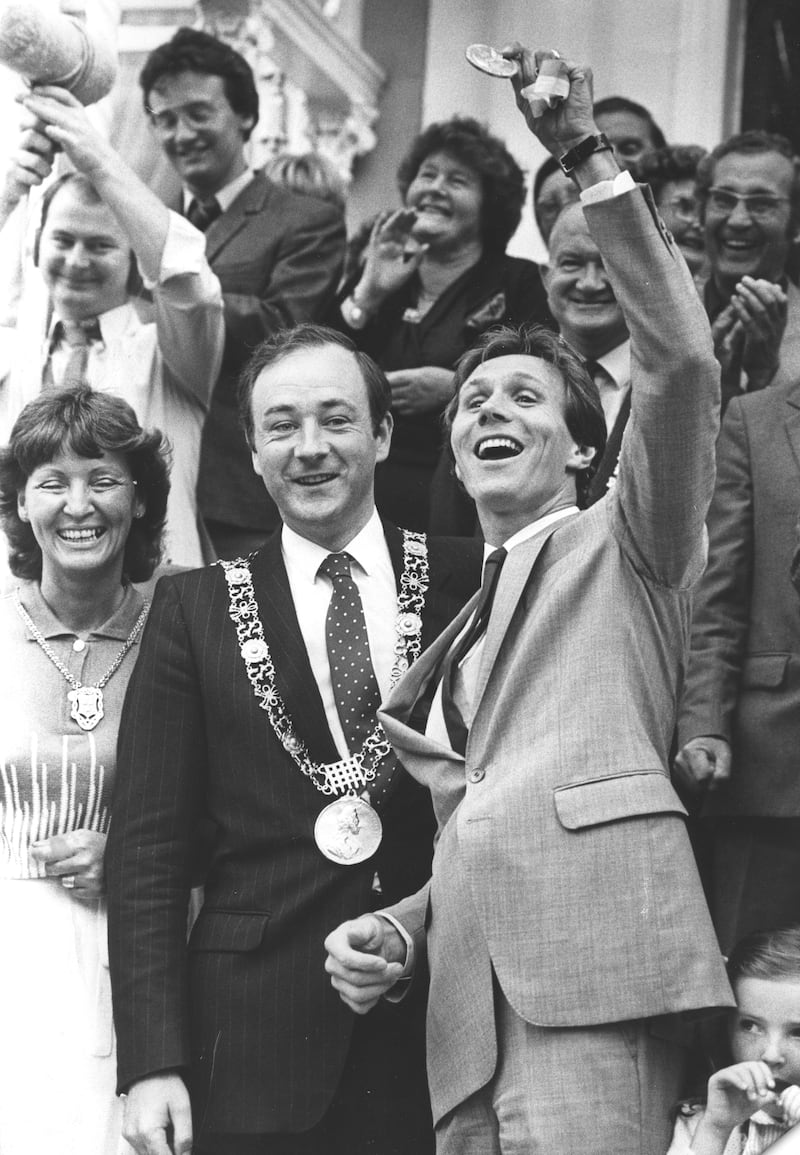
“Oh, everyone misread it,” he says. “No question. You arrogant son of a bitch. Yeah. Yeah. Yeah. I would have been a bit flamboyant and showy. People either went with that or they didn’t. The Americans went with it. It just gave me a huge amount of self-confidence. I mean I used to get the shit kicked out of me by the Christian Brothers in school.
“I found it difficult. Maths was difficult. Comprehension was difficult and it turned out many years later I had a dyslexia problem. But the one thing the running gave to me was self-confidence. No matter how much shit I got kicked out of me by the Christian Brothers, I felt powerful because I had the ability to run and I was also getting commended by them for bringing championship wins back to the school.”
“Yeah, I’ve been reminded of the world championship a lot,” he says. “Because the year I ran the 3:49 indoor mile [world record] was ‘83 and the World Championships was ‘83. It goes out on social media. You know, the anniversary year. It was the most important and successful year in my athletics career.”
That career spanned two decades from when he travelled to Villanova College in the US in 1971 until 1994 on the Harvard University indoor track, when he became the first man aged over 40 to run a sub-four-minute mile. His years are a sprawling vista of records, championships and medals.
But 1983 was Coghlan’s watershed year for several reasons. Significantly it was bookended by tragedy and triumph that also reached back into the previous season when he was crippled with an Achilles tendon injury. On the recommendation of his friend and 1982 European 5,000m champion, Thomas Wessinghage, who was studying to be an orthopaedic doctor, Coghlan travelled to Germany.
“I couldn’t get rid of the injury. Nine months I was out and all I could think of was Ronnie Delany and his career. An Achilles tendon injury. Maybe this was my time [to stop],” he says.
Wessinghage’s instincts were good. The injury problem was resolved. Fired up with relief and ambition, Coghlan returned healthy to the US.
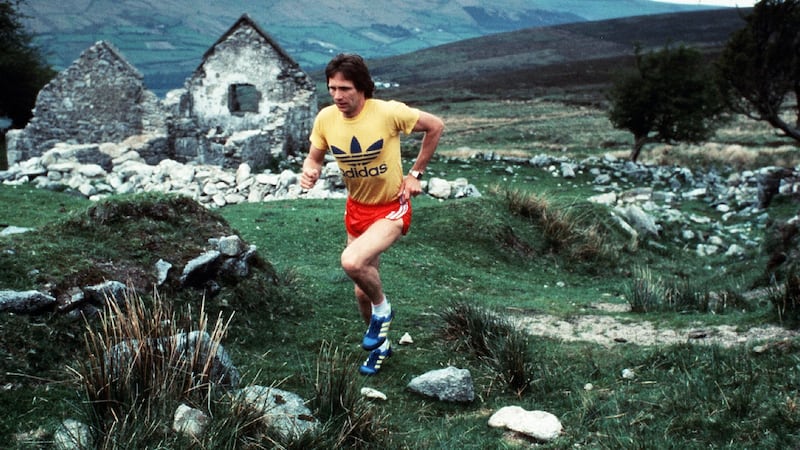
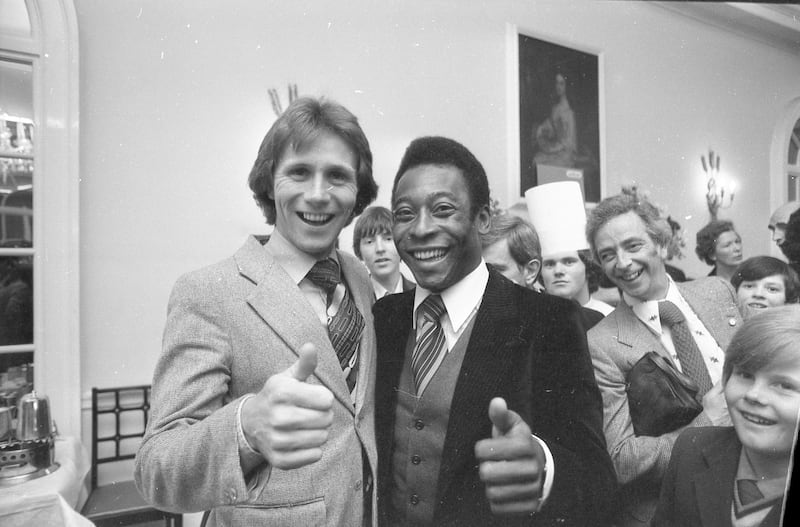
“I swore from that September that instead of doing 100-plus miles a week I was going to cut back. If you saw my training diaries today, you’d be blown away by the stupid amount of work I did. So, by the time the indoor season of ‘83 came around I knew I was ready. I called my father and said ‘listen Da, I’m going to go for a sub 3.50. I’m going to go for the world record in the mile in the Meadowlands in New Jersey, why don’t you come over’.
“He came in on the Wednesday. When I picked him up off the plane, he was white as a ghost. I thought God, he doesn’t look well at all. On Friday I won the Wanamaker mile, I think the fifth. My Villanova team-mates, who were there, had a little social gathering. He was real quiet in the corner, didn’t interact with these guys. The next day he was complaining of indigestion. I was living in Rye, New York at the time.
“He went to bed that night and passed away in his sleep. I remember getting up in the morning and my little daughter Susan was there. I said where’s grandad. She came down after looking at him and she says he’s fast asleep. Off I went and ran about six miles, whatever, did my stretching, came back and said ‘go check on grandad’. She came down again and said he’s still asleep. I said he couldn’t be asleep with the time change and jet lag he’d be awake early.
“So, I went up . . . I could see.
“After the funeral mass in Ireland, I remember my mother saying to me ‘you go back to America now, you go back, break that world record. It’s what he would want. You don’t be blaming yourself’.”
He returned into the maw of the famous Megalopolitan blizzard of ‘83, which swept up the eastern seaboard of the USA. The New York area was all but shut down, with Central Park covered in 17.6 inches of snow in one of the largest storms on record in the city. The 35-minute journey from the Meadowlands Arena in New Jersey to his house took seven hours.
With races cancelled in Dallas and Toronto, through his former New York Knicks friend Ray Lumpp, Coghlan got into the US Track and Field Championships on a Friday night in Madison Square Garden, won it and was scheduled to run again on Sunday in Meadowlands. But on Saturday relatives arrived from Ireland and spilled into Rye. Coghlan bolted.
“Somebody was giving out shite to me about something,” he says. “I stormed out of the house and went over to the Meadowlands in New Jersey to the Hilton Hotel to be on my own. Best thing I could have done. It was the first time ever a track meet was held on a Sunday in the USA. Literally minutes before I left the room, I was writing the splits down on a piece of paper.
“I’d imported my rabbit, Ross Donoghue, who was a fellow New York Athletics Club teammate. He was to take me at 58-second pace all the way. I wanted to keep them even.
“After the 880m mark he pulled out. I had to make up my mind. Do I let this guy go in front of me and the pace go too slow. Then . . . it was almost something spiritual that happened to me. My mind that day thinking of my father. Something spiritual happened and I remember listening to the crowd.
“I knew how to read the crowd. If someone was coming up on me there would be a certain roar. I could read noise off the crowd and knew how they responded to the moves. But I could also read that day that they were really with me. They knew what had happened because it was on the front of the New York Times. Eamonn Coghlan’s father dies.
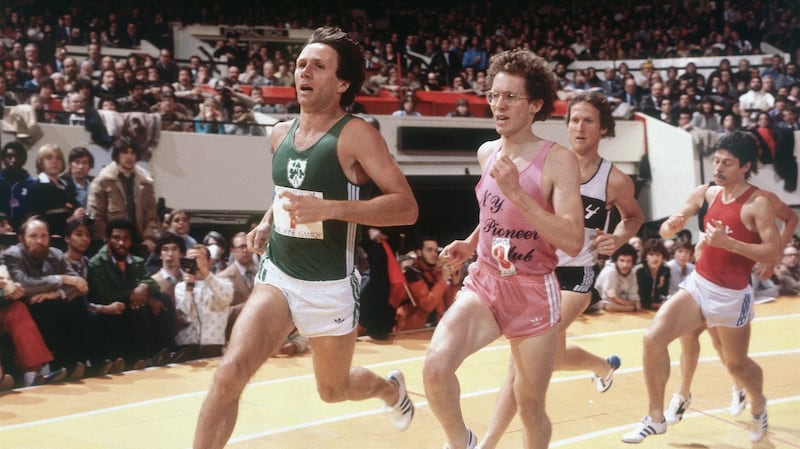

“It was like running on a cushion of air those last two laps. Nobody came near me. Steve Scott, I thought was challenging me. Turned out it was Ray Flynn. I didn’t know until after the race. I felt on that final lap that I could do this for ever and ever.
“We went through in 2:54 as I had planned and came back in 55 to run the 3:49 mile. Really emotional. I drew from the sadness of finding him dead in bed to inspiring me to do something that I had brought him over to see.”
Coghlan held the 1,500m indoor world record from 1979, when he first broke it. When it was next broken in 1997 by El Guerrouj, he’d had ownership of it for 18 years. Every indoor track middle distance record in the US had Coghlan’s name at some stage.
Some were fast tracks, others slow. Some had loose boards, others steeply banked. Some had spring, others stiff. Although he earned the title Chairman of the Boards, Coghlan bridles at being labelled just an indoor runner. He ran all over Europe.
In 1978 he won 1,500m silver at the European Championships in Prague, second to Britain’s Steve Ovett. But the Olympic Games were another matter. A failure, he calls them. He says it doesn’t eat him up. In ‘76, it was there for the taking and he blew it, he says. In ‘80 he came off injury, had dysentery in Moscow and was lucky to be there, he says.
He says the Olympic Games does funny things to the mind. You can be the greatest runner in the world in between Olympiads and suddenly it plays havoc with you. But, he says, twice fourth is twice fourth. Own it.
“It’s the difference between greatness and failure in the Olympic Games. You are not even thought of in the last 40 years because you finished fourth. If you were a bronze, silver, or gold medalist you go down in the annals of sport as an all-time great. While I might go down in the annals of sport as a really great runner, the pits is coming fourth twice and it lives with you for the rest of your life.
“It is not something I look back on with begrudgery. I’ve been very blessed by what I achieved in athletics. I’m talking about the microcosm of greatness, when it comes to the Olympic Games. If you are outside the first three, who cares. In the first three and ain’t you great.

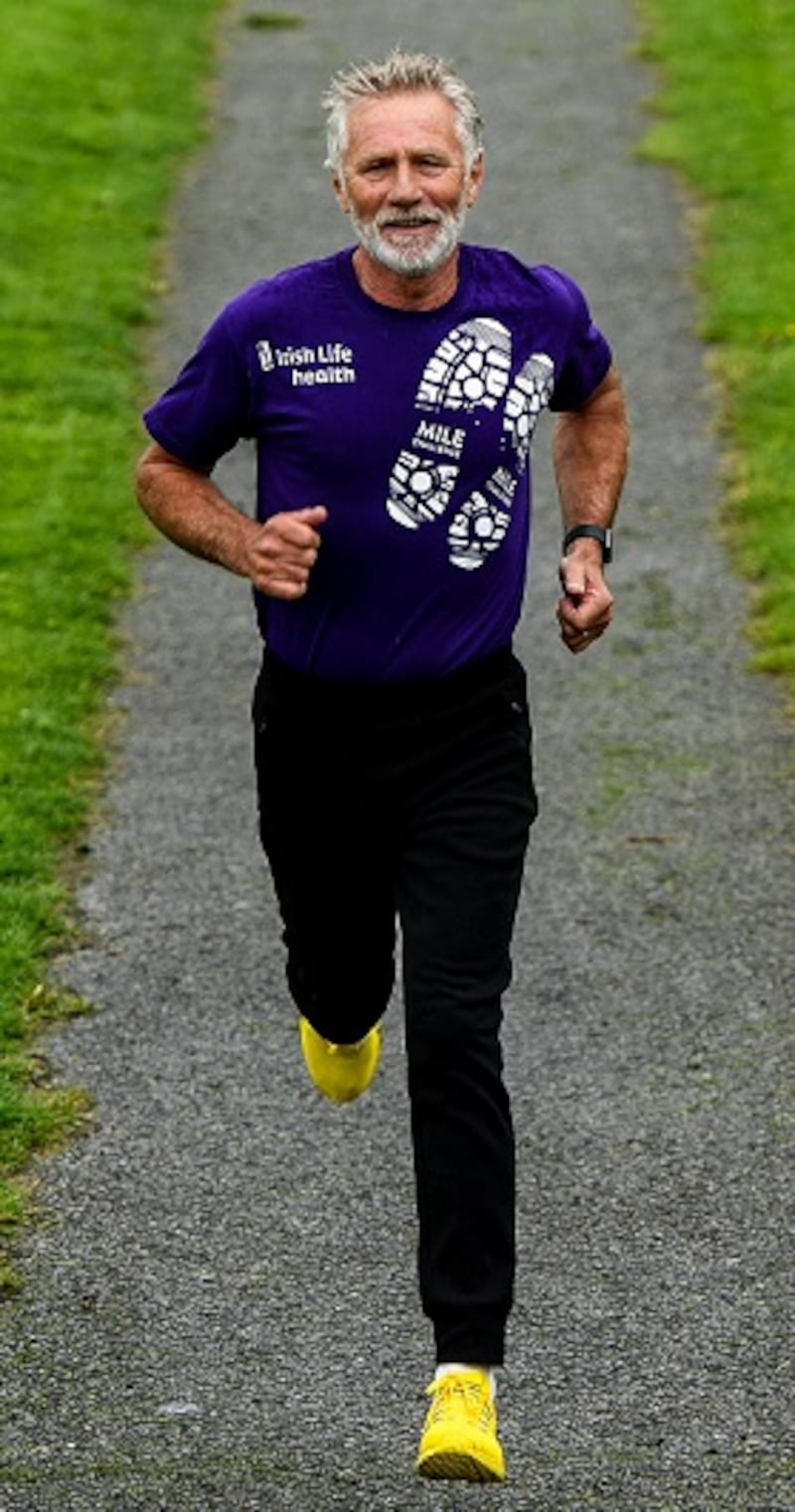
“So, that’s the reality. I won in London, Zurich, Oslo everywhere. But I didn’t win the Olympics. I really truly believed I could do it. I knew I had the weapons, the speed. What hampered me was the fear of failure in ‘76. It’s your final day of judgement and it’s the fear of failing that probably hurts most sports people and it did to me. In 1980 not a chance.”
Growing up with Brian Kerr around Drimnagh in Dublin, football has also part of Coghlan’s street history. They lived across the road from each other and as toddlers were wheeled to the local shops in a twin pram. Kerr’s mother Margaret and Coghlan’s mother Kathleen were best friends. While Kerr took the football route, Coghlan’s epiphany came when he joined Celtic Athletic Club. The first race he ran in his first day at the club, he won.
From the beginning he fed off confidence and in ‘83 with the World Championships scheduled for August and the world record indoor mile secured, Coughlan found himself in Helsinki the night before the final of the 5,000m sitting with Bobby Begley, Jim Kilty, Declan Hegarty, Frank O’Mara and Brad Hunt, his IMG agent. Hunt asked what he thought about the final and Coghlan pointed to a spot on the track.
He said he was going to do what Jumbo Elliot always told him ‘one move and one move only’. See that spot down there, said Coghlan pointing, that’s where I’m going to go from.
“When it came to it, I ran as part of the pack,” he says. “I kept an eye on everything that was going on. Then it came down to four laps and my mindset changed. I’m now a miler. Forget about the previous 8½ laps. Now I’m a miler. I gradually worked my way up over three laps to go, two laps to go. Dimitri, the Russian, had already gone into the lead and I’m now sitting behind Wessinghage with about 500m to go.
“But Thomas [Wessinghage] wasn’t making his move to catch up. Nobody was making the move. I said this is it. As I got to 300m to go I knew. I knew I was going to catch him. I looked behind me and the boys were gone. I was in complete control at that stage. With 200m to go, with 100m to go I knew I was going to win the World Championships.
“When I went by, I just looked at Dimitri. Thank God. Thank God. I’ve done it for you guys, Gerry Farnon, Jumbo, my father. It was a time for thanksgiving. It was a time for gratification. It was a time for doing what I knew I could do.
“That was it. I didn’t in any way feel I was trying to humiliate him or gesture him in a negative way. It was nothing like that. It was thank God I got it for you guys and even with 50 yards to go I put my hands out again. When I went over the line the first gesture I made was the crucifix. All the little things in life that you had put together . . .”
After more than 80 sub four-minute miles, he still has the mind of a runner but not the body, he says. Yesterday, a new hip allowed him do what he does and he ran five miles around the park with 78-year-old Tommy Swift, Bobby Murray (69) and Frank Nolan (71), the guys he ran with before he left Ireland to conquer America.
They run in the park on Thursdays and Sundays. A lifetime of running has brought Eamonn Coghlan back to where he began.























